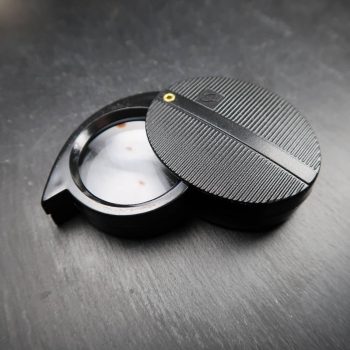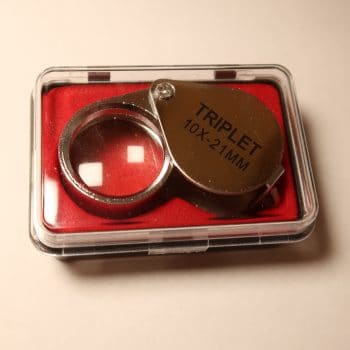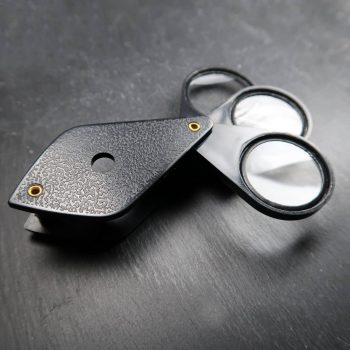Loupes
A loupe is a form of magnifying glass, typically used by jewellers, geologists, antique experts, conservators, and anyone else who requires close up, portable magnification ‘in the field’.
There are several types, including loupes with a single lens, and loupes with multiple lens and prisms intended to offer higher magnification and correct visual aberrations.
Showing all 3 results
-

Magnifying Loupe – Dual x5 and x10 Lens
£4.50 -

Magnifying Loupe – Single x10 Lens
£5.00 -

Magnifying Loupe – Triple x4, x8, and x12 Lens
£4.00
Some people refer to them as hand lenses, which is a completely valid name too. The word loupe is a french loanword.
Jewellers typically use a small hand held monocular loupe; the most commonly used magnification is 10x, and ideally a triplet loupe, which corrects both chromatic and spherical aberration, known as an apochromatic loupe.
Other industries may use other types of loupes – there are binocular loupes which are head mounted like glasses, or loupes which clip onto your glasses. There are some that are held in the eye like a monocle, too, but I don’t recommend those.
We may think the most important feature is ‘more magnification’, but we do need to consider some other things:
- Chromatic aberration (the lens distorting the colours)
- Spherical aberration (the lens distorting the image)
- Size of the lens
- Quality of the material – plastics, glass, etc.
